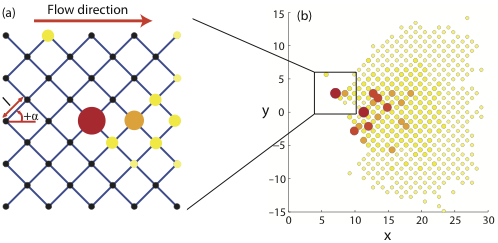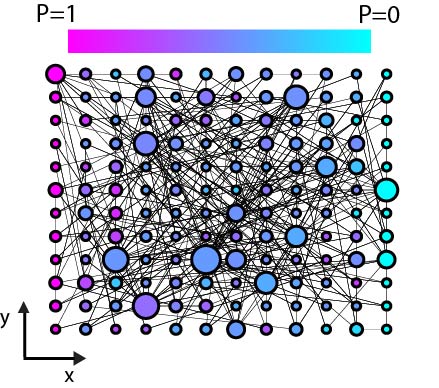Flow through Fractured Media
Understanding flow through fractured geologic media is essential for improving several societal related issues, including the risk assessment of nuclear waste disposal, site selection and assessment of leakage risk in geological CO2 storage, and the development of enhanced geothermal systems. However, there are two main challenges to deal with in order to understand dynamics of transport and to develop a successful model. First, the location and properties of individual fractures are not identifiable. At best, only some representative properties of the network can be inferred from analogue geologic outcrops or high- resolution seismic interpretation. Also, it is well known that flow through fractures leads to anomalous transport, which refers to the spreading of a substance or a signal in a way that deviates from classical diffusion and cannot be accurately captured with a traditional advection dispersion equation. We attack this problem by representing geologic fractured media as a network system. Stochastic transport modeling of these representative network systems provides critical information for developing a new theoretical framework for flow through fractured media.
In the Juanes Research Group, we attack this problem mainly in two approaches.
1. Developing theoretical framework for transport through idealized fracture network.
We take stochastic approach and Lagrangian viewpoint to develop a rigorous upscaling framework for transport in an idealized lattice fracture system, which leads to exact macroscopic equations for the concentration mean and variance. Our theoretical results establish a foundation for developing macroscopic models of anomalous transport in networks with correlated velocity fields and more complex topologies.

2. Understanding relation between transport and network topology.
The emergence of scaling in transport through interconnected systems is a consequence of the topological structure of the network and the physical mechanisms underlying the transport dynamics. We study transport by advection and diffusion in scale-free and Erdos-Renyi networks. Using stochastic particle simulations we find anomalous scaling of the particle plum spreading with time. We explore the connection with existing descriptions of anomalous transport in disordered systems using the Continuous Time Random Walk model.
